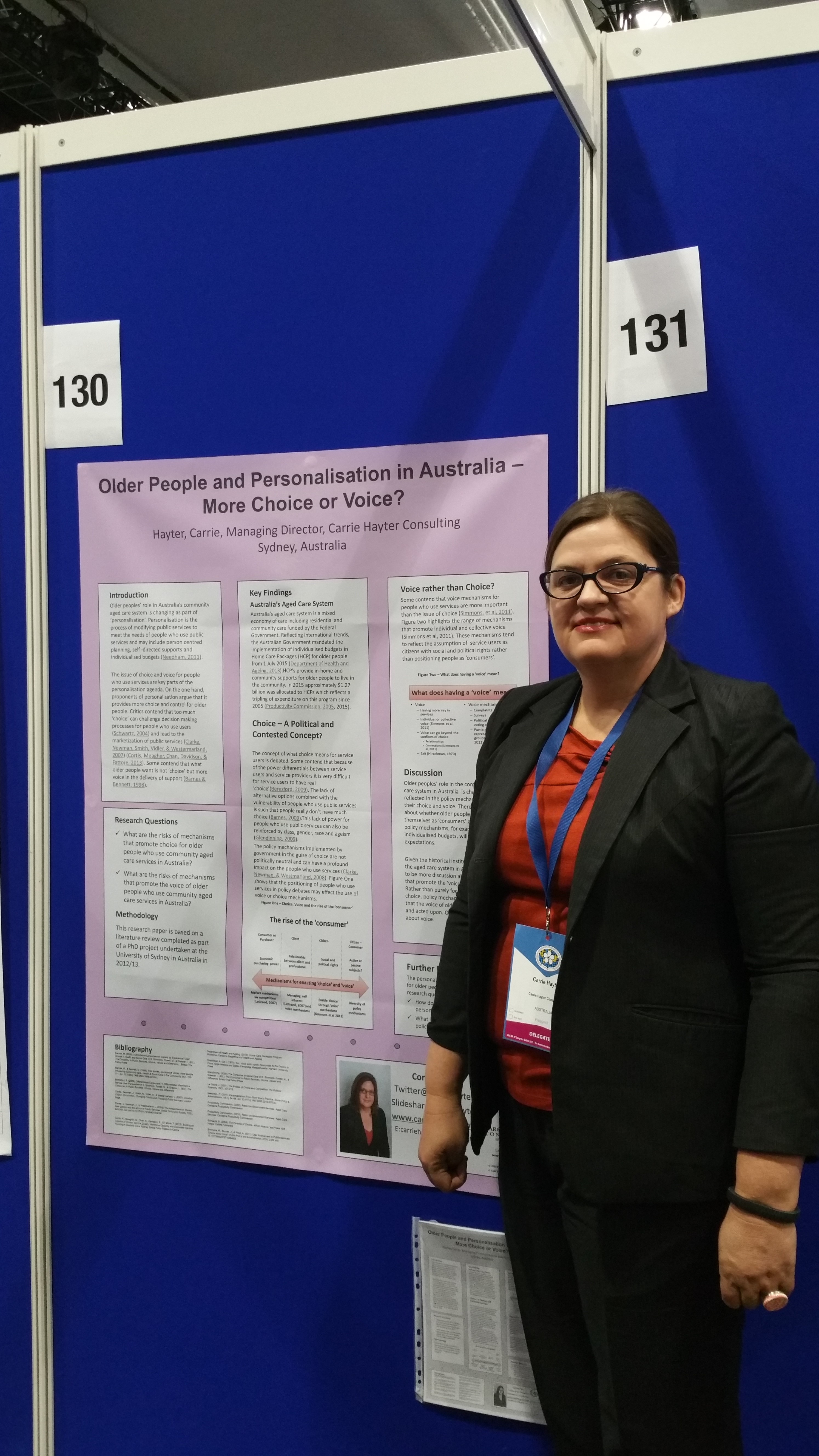Consumer engagement in Aged Care Services – An adaptive leadership challenge
Consumer engagement is central to the new Aged Care Standards, however, people often don’t reflect on its meaning. Firstly, if we look at the word ‘consumer’ it implies agency, that people can absorb a range of information and make informed choices about their care and support. Older people should be empowered to make informed choices about their care and support, however, research demonstrates that many older people have a network of family, friends or health professionals to assist them in making choices about aged care (Petriwskyj, Gibson et al. 2015, Trigg, Kumpunen et al. 2017). In order to have engagement, people need to have agency, access to appropriate information and access to appropriate support to be able to engage. Secondly, the word engagement may have many meanings, engagement can occur at an individual, family, community, service or organisation-wide level.
In 2018, I partnered with COTA Queensland and the Aged Care Quality Agency (now the Australian Aged Care Quality and Safety Commission) to facilitate 17 Enhancing Consumer Engagement workshops with over 400 staff working in aged care across Australia. The workshops were designed to describe consumer partnering and engagement, identify the spectrum of engagement approaches and identify some common engagement methods for aged care providers to use in preparation for the roll-out of the new aged care standards. The workshops were participant-led and supported participants in using the Engagement Toolkit developed by Dr Andrea Petriwskyj from the University of Queensland.
The Enhancing Consumer Engagement workshops used an adaptive leadership framework to explore how managers lead changes in consumer engagement in their service. Heifetz, Grashow and Linsky (2002, 2009) contend that there are different types of leadership challenges, those that are technical challenges (where the solutions are known and those with the expertise can solve the problems) and those that are adaptive leadership challenges. Adaptive leadership challenges require new ways of learning, thinking and acting and often deep cultural change in systems.
Effective consumer engagement and participation requires leadership from staff and consumers of aged care services and is an adaptive leadership challenge. Staff may need to think and act differently in their system to enhance engagement with consumers. Consumers may also need to play different roles. As a leader, it is important to think about what you need to do this work and who are the staff, colleagues and consumers who could support you to do this work. Heifetz, Grashow and Linsky (2002, 2009) call this creating a holding environment - it is designed to support you to work differently in your system. Not having a holding environment or space to talk about the challenges of consumer engagement, can often lead to roadblocks for services in improving how they engage with consumers.
Even the language that we use to describe ‘engagement’ could be considered an adaptive leadership challenge for staff in aged care. I have observed that some providers think that person-centred care is consumer engagement. Person-centred care and practice is one part of engagement. Engagement is much broader than person-centred care and encompasses how we engage people at a service, community or organisational level. Engagement is much more than engaging with families and older people at the individual level, it can be about what structures we have in our service to facilitate engagement, or how we support people to participate in engagement across our service system.
Where do I start?
There are four steps you can take to start to think about consumer engagement as an adaptive leadership opportunity in your service.
Step 1 – Map how your service currently engages with consumers
The first thing I ask staff is – how does your service engage with consumers? We often use the engagement mapping tool from the Engagement Toolkit and the Self Assessment Tool Aged Care Quality Standards as a starting point to explore different ways the service engages and the depth of the engagement. The Engagement Mapping Tool includes the ladder of engagement, because engagement with consumers can be considered a ladder from providing information, consulting, partnering to empowering older people and their allies. People can provide a range of examples of engagement with individuals and families. For example, providing person-centred care, providing information about our services, working with the person and their family to look at their support needs and design services to meet their needs, doing annual customer satisfaction surveys and using these results to improve services. These are all good starting points for a conversation about the purpose of our engagement, and whether we could engage people in a different way, as well as identifying gaps in engagement mechanisms.
Every organisation has its own journey of consumer engagement. You may be the Director of a stand-alone residential facility and have had some complaints from residents about the meals or dining experience. This could be a perfect opportunity to explore how you can engage the residents in redesigning the meals or dining experience. Alternatively, you may be running a range of in-home and in-community supports for people and want to explore how you could better engage consumers in how services are designed and delivered. You just need to start where it makes sense in your system. Small steps can often lead to significant change.
Step 3 – Develop a plan of action
You can use the Action Planning Tool in the Engagement Toolkit to develop a plan of action. The questions in this tool will help you to think through the issues and roadblocks that could emerge in your consumer engagement project or initiative. This includes allocating resources - without time and money, many consumer engagement projects get sidelined. It also includes exploring how you will evaluate and monitor the project and the experiences for consumers and staff. Always think about how you can engage consumers in every step of the journey and what support they need to be active partners.
Step 4 – Create a holding environment to support you or your team to do the work
Consumer engagement requires consumers and staff to work collaboratively and be willing to explore and have honest conversations. It requires consumers and staff to think and act differently in your service. I have observed that some staff thrive in wanting to share power with consumers, while others may struggle to allow consumers to express their perspectives and, use this to change practices. These staff will need to do their own adaptive work to shift their practice. Similarly, some consumers may struggle to know how to engage and need support and prompting for engagement to occur. Stop and think about who should be involved in the work and what support they might need to get there, including how you may need to turn the heat up or down (Heifetz, Grashow and Linksy, 2002) to keep people in the right mindset for change.
Consumer engagement is a journey that requires consumers and staff to be adaptive leaders who are willing to explore and learn from these experiences. Be willing to experiment and learn from these lessons and always think - how can we engage consumers in this process?
References
Heifetz, R., Grashow, A., & Linksy, L. (2009). The Practice of Adaptive Leadership - Tools and Tactics for Changing your Organisation and the World United States of America Cambridge Leadership Associates
Heifetz, R., Grashow, A., & Linksy, L. (2002) Leadership on the Line, United States of America Cambridge Leadership Associates
Petriwskyj, A., A. Gibson and G. Webby (2015). “Staff members’ negotiation of power in client engagement: Analysis of practice within an Australian aged care service” Journal of Aging Studies 33: 37.
Trigg, L., S. Kumpunen, J. Holder, H. Maarse, M. SolÉ JuvÉS and J. Gil (2017). “Information and choice of residential care provider for older people: a comparative study in England, the Netherlands, and Spain.” Ageing and Society: 1-27.


.jpg)
